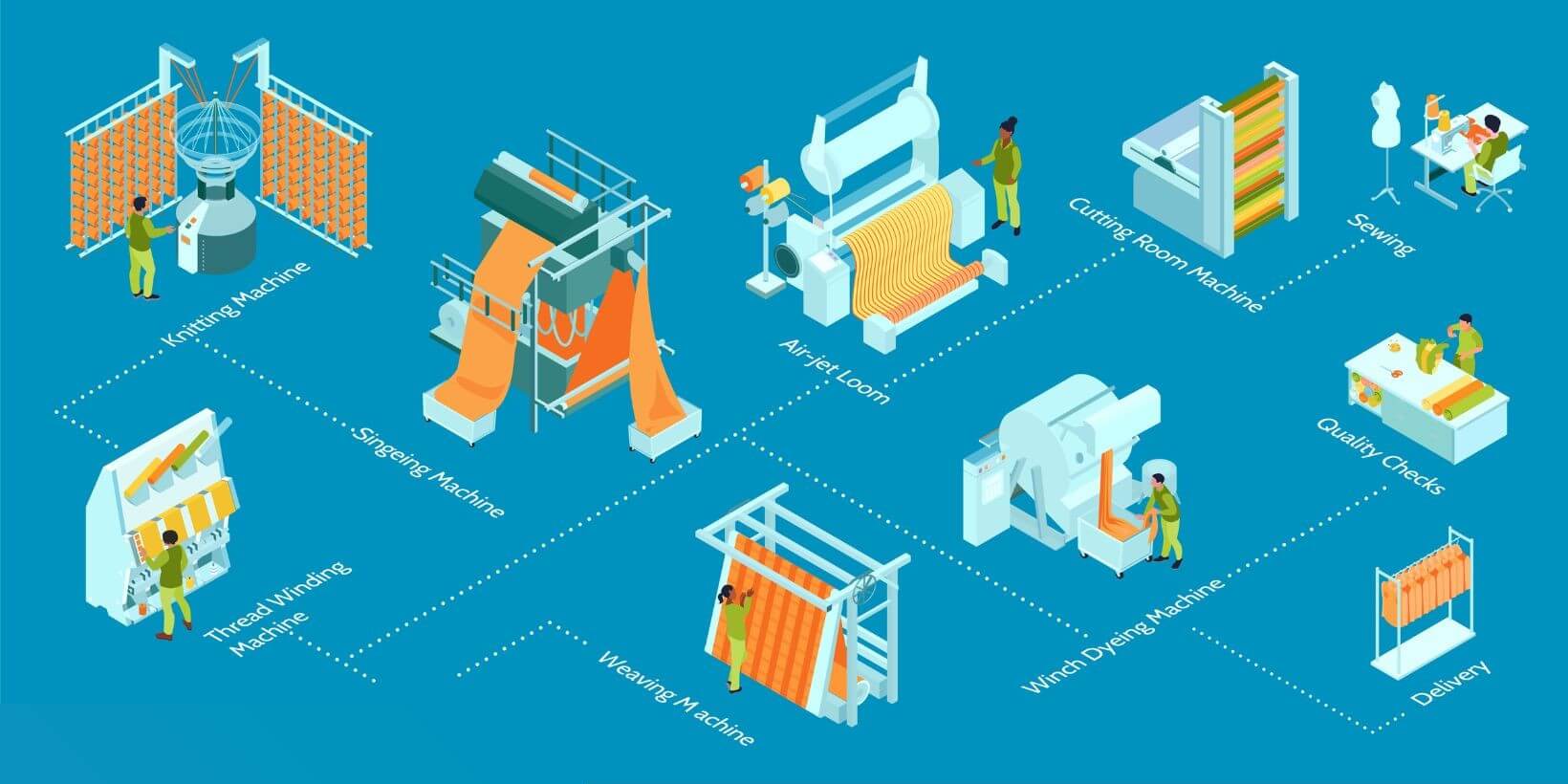ERP and MES in Textile: Traceability and Sustainability

The sustainable textile industry has become a global imperative. Regulatory pressure, consumer demands and sustainability objectives mean that factories must evolve towards more efficient digital models.
In this scenario, sustainable industrial textile ERP and textile MES for traceability and OEE (Overall Equipment Effectiveness) play a decisive role: they make it possible to optimise resources, reduce the environmental footprint and ensure full traceability in apparel and fashion.
Sustainability and traceability challenges in the textile industry
The textile industry is one of the sectors with the greatest environmental impact. Water consumption, waste generation and lack of traceability are challenges that require new digital and sustainable responses.
- Environmental impact and regulatory pressure: According to the European Parliament, around 20% of global clean water pollution comes from textile dyeing and finishing processes. This places the sector as one of the most water-intensive and environmentally impactful. In addition, the EU Strategy for Sustainable and Circular Textiles (2022) states that, by 2030, all textile products marketed in Europe should be durable, recyclable and have a smaller environmental footprint, obliging companies to strengthen traceability and reduce their emissions.
- Traceability requirements in fashion and clothing: Consumers demand transparency; they want to know where each garment comes from and under what conditions it has been manufactured. Traceability in sustainable fashion is becoming a competitive value.
- Digitisation as a key answer: Integrating technologies such as ERP and MES allows real-time data collection, accurate planning and certification of sustainable processes.
The textile industry can only move towards sustainability with tools that ensure traceability, efficiency and regulatory compliance.
Textile ERP for efficiency and environmental footprint reduction
Textile ERP industrial, such as RPS Next, has become the backbone of digitisation. It enables end-to-end planning, control and optimisation of resources, reducing waste and emissions.
- Material planning and waste reduction: A specialised ERP helps to calculate the actual consumption of water, energy and materials. This helps reduce textile waste and accurately plan each production batch.
- Supply chain and inventory optimisation: Thanks to digital integration, ERP connects suppliers, warehouses and production. This reduces overproduction, excess inventories and unnecessary transportation, thus reducing the carbon footprint.
- Sustainability KPIs: With RPS Next, indicators such as energy consumption per garment, litres of water used per batch or the percentage of recycled materials used can be monitored.
Textile ERP transforms planning into a strategic tool to improve efficiency, reduce costs and move towards sustainable fashion.
Textile MES for OEE, traceability and real-time control
While the ERP plans, the textile MES for traceability and OEE, like INEXION MES/MOM, ensures in-plant control and efficient execution.
- In-plant monitoring and scrap reduction: The MES captures machine and operator data in real time. This makes it possible to detect faults in the manufacturing process and reduce scrap in defective batches.
- OEE measurement and energy efficiency: Calculating OEE (Overall Equipment Effectiveness) in textile mills makes it easier to identify bottlenecks, measure energy efficiency and reduce unplanned downtime.
- Full traceability from raw materials to final garment: Every roll of fabric, every dye lot, and every final garment can be recorded in the MES, ensuring full traceability and compliance with sustainability audits.
The MES turns the textile plant into a digitised environment, where traceability and operational efficiency are direct levers of competitiveness.
ERP and MES integration: digitisation for sustainable fashion
The real strength of sustainable digitalisation in textile apparel comes from integrating ERP and MES in the same ecosystem.
- How RPS Next and INEXION MES complement each other: RPS Next manages material planning, costs and inventories, while INEXION MES ensures traceability and quality on the shop floor. Together, they offer a 360° view of the production process.
- Benefits: cost reduction and improved sustainability. Companies that integrate ERP and MES achieve up to 15% less material waste and a 20% reduction in energy consumption per unit produced.
The integration of ERP and MES is the key to turning textile sustainability into a measurable and profitable factor.
The sustainable textile industry needs technological allies that combine planning, traceability and cybersecurity. ERP and MES allow measuring, reducing and certifying the environmental impact of each process, generating efficiency and confidence in customers and regulators.
At Overtel, we help textile mills integrate solutions such as RPS Next and INEXION MES/MOM, achieving digitalisation aligned with sustainability goals and global competitiveness.
Request a personalised demo by clicking here.
.png?width=501&height=92&name=Overtel%20Logo%20Postivo%20(7).png)

.jpg)
.jpg)